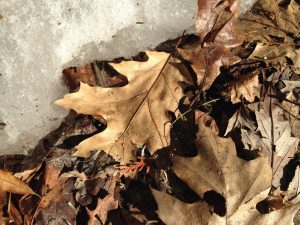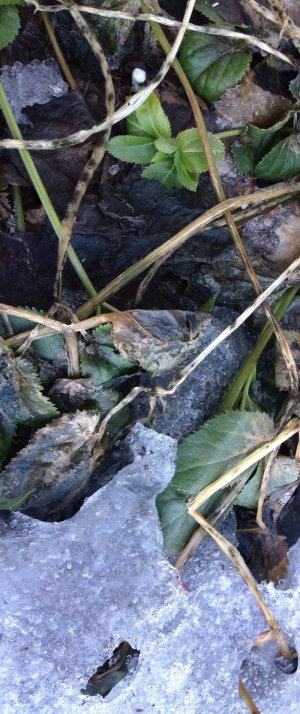by Renate Sander-Regier
 With spring in the air, and snow and ice in full retreat, the temptation can be strong to get out there and “clean up” the jumbled leaves, crumpled vegetation, and withered plant stalks in the garden. Conventional gardening wisdom encourages us to get to work as soon as possible.
With spring in the air, and snow and ice in full retreat, the temptation can be strong to get out there and “clean up” the jumbled leaves, crumpled vegetation, and withered plant stalks in the garden. Conventional gardening wisdom encourages us to get to work as soon as possible.
But other voices are advocating for more relaxed approaches to garden and lawn care to help pollinators and other beneficial insects survive and thrive (see links below).
 Recently published research provides one more reason not to rush into raking, cutting and digging in our gardens early in the season: queen bumblebees might be resting there, and our activities could put them at risk.
Recently published research provides one more reason not to rush into raking, cutting and digging in our gardens early in the season: queen bumblebees might be resting there, and our activities could put them at risk.
Scientists at Queen Mary University of London found that new queen bumblebees do not, contrary to customary belief, emerge from their overwintering sites full of energy and intention. They do not start flying around right away, feeding and looking for a place to establish a colony.
It would not make sense for the new queens to behave that way, when you think about it. They are sure to need time to wake up properly, exercise their flight muscles, and get their bearings.
And that is just what the researchers discovered. They observed queen bumblebees emerging from hibernation in the wild, and they tracked their antenna-wearing counterparts after they came out of artificially-induced hibernation. Both sets of queen bumblebees demonstrated the same behaviour: short, intermittent flights in what looked like random directions, interspersed with long periods of rest among grass and dead leaves. The bees spent most of the time on the ground.
One of the researchers, James Makinson, is quoted as making the following recommendations to help queen bumblebees stay safe during this vulnerable period:
- create pollinator friendly corridors between conserved landscape patches
- plant pollinator friendly flowers and trees all year round, giving bumblebee queens ample access to food during their early spring emergence
- leave vegetation, such as leaf litter and long grass, undisturbed until late in the spring
The researchers also offer suggestions for helping to revive exhausted queen bumblebees we might happen to find on the ground (see last paragraph of Beware of sleeping queen bumblebees underfoot this spring). Read more in the research summaries below.
Read more
Summaries of this research
- Unexpected queen bumblebee discovery could help us save multiple colonies
- Beware of sleeping queen bumblebees underfoot this spring
- Queen bumblebees take long breaks in the grass after hibernating
The full research article
More on helping pollinators early in the season
WPP-PPS member blog posts encouraging more relaxed gardening practices
- Pollinator garden spring clean-up (Corner Pollinator Garden)
- Thoughts on spring cleanup (A Cultivated Art Inc.)
- Putting the garden to bed – while helping pollinators
- Neglect your lawn for pollinators